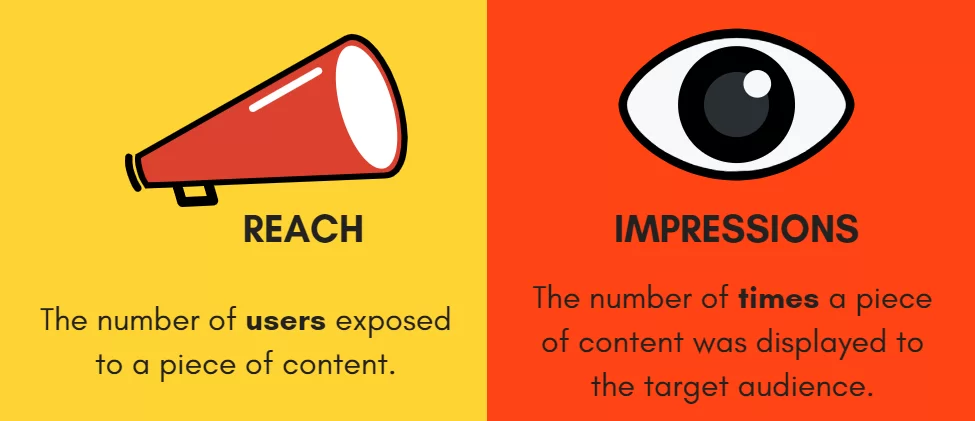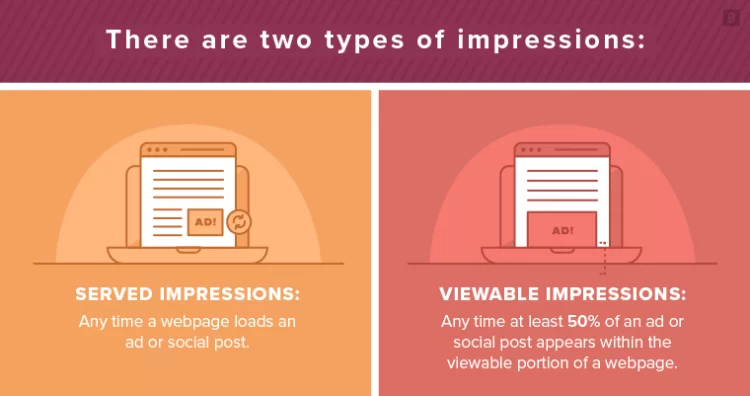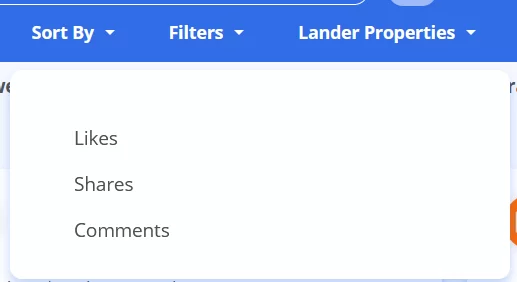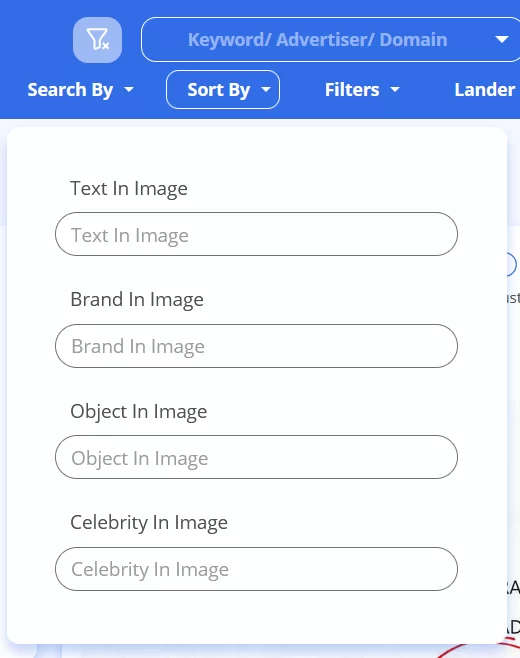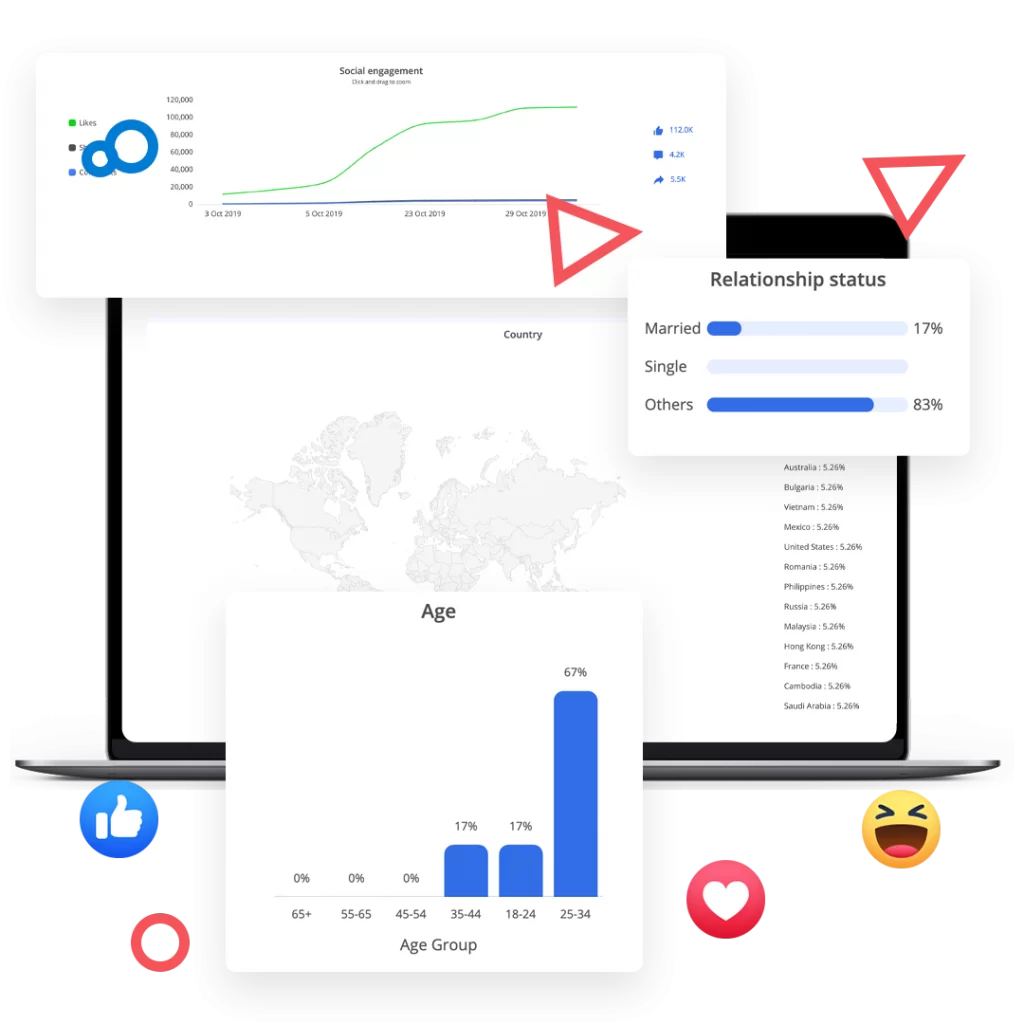What Is An Ad Impression And Why Is It Important?
Ever since traditional marketing embarked on the journey to go digital, social media marketers cherish the accessibility to the ad impressions provided for their ads. It is way simpler now for them to see how their ads are performing in the real world.
But for us to understand what these insights mean, it is crucial to learn about the metrics first! Let us take a deeper look into them.
Listen To The Blog Post Now!
Ad Impressions: One of the most vital metrics in the digital world!
Ad impressions, or impressions, are crucial social media metrics to track for marketers to gauge how well their ads are doing online. These metrics depict how many people have witnessed the advertisements in full glory and interacted with them.
The most commonly used metric in social media is impressions. Social media distributes material to the public such content that is timely, relevant, and interesting will do well. The media then picks it up and uses the content to create brand impressions. Views on sponsored media or opens in email marketing are examples of impressions. The difference is that impressions level the playing field for social media.
To understand them, we must first answer the question – what are ad impressions? Let us find out!
“Impressions,” by definition, means the number of times an ad or a post online has been rendered or viewed by users online. One key point to note about impressions is that this metric is not measurable by actions by the users but is simply the number of times the ad has been on people’s screens, irrespective of any action taken.
In easier words, impressions are simply the number of people witnessing your advertisements while browsing the internet.
Impressions are taken into account by marketers when gauging the number of people who have seen the ad. That means impressions are a way for YouTube ads measurement and your online brand awareness It provides the necessary insights for marketers to successfully gauge how many people know about the brand.
Impressions are the platform’s way of telling you about all the times your ad was on your audience’s screen. However, people go through content all the time. It is the main reason why impressions do not reliably tell us when somebody interacts with our ad.
How are Impressions calculated?
The number of times an instance of an ad appears on screen for the first time is an impression. (For example, if an ad is shown on the screen and someone scrolls down and then back up to the same ad, it counts as one impression.) Two ad impressions are counted if an ad appears on a person’s screen twice in one day.) If your audience sees the same ad too many times and eventually stops paying attention to it. That’s Ad fatigue.
This way of calculating video impressions is not the same as for video advertisements. Impressions for ads that feature pictures or videos are tallied in the same way. It implies that the impressions are unacknowledged until the video starts playing.
To measure these impressions solidly, marketers use a unit called CPM. CPM is one of the pricing methods put to use for calculating the performance of an advertisement. When advertisements get paid for ad impressions, the CPM method calculates how many impressions the ad has made and the cost to accommodate that.
CPM stands for “cost per mille,” with “mille” being a Latin term that means “thousand.” It essentially implies that the cost of CPM advertising is determined by the number of impressions monitored. Advertisers pay publications a specific sum for every thousand impressions. Let’s look at how marketers come up with these CPM rates.
CPM’s mathematical formula is as straightforward as the philosophy behind it. Because CPM stands for cost per thousand impressions, you divide the price by the number of impressions divided by 1,000.
So mathematically, CPM = 1000 * Cost / Total number of impressions.
Digital marketers everywhere prefer getting paid by this pricing method as it is the least risky of them all. It is much simpler than its other alternatives (CPC (cost per click) and CPA (cost per acquisition). It provides digital marketers with a clear idea of how much they will be paid for showing their ads per thousand people.
Why should you go for CPM (and why you should not)?
The cost-per-mille method is a relatively easy way to calculate the cost per thousand impressions. This simplicity, however, comes with its own set of pros and cons. Let us learn more about these!
Advantages:
- Affordable: CPM is a low-cost approach to maintain a social media presence. Advertisers sometimes seek to increase their presence on social media. In this situation, CPM is an excellent approach to spread the word without depleting your advertising budget.
However, it is to obtain views, not for taking action on the advertisement. It indicates that you are unconcerned about getting traction without clicks. It works for some company objectives; it all relies on the advertising approach you need to use.
- Brand Awareness: CPM aids in building brand awareness among potential clients. It offers a cheap way to engage in promoting your brand. When your brand, logo, or product is visible on a high-traffic site, it leaves an imprint in the viewer’s mind.
Even if ads work without necessarily requiring a specific action from the viewer, it is dollars well spent. Building brand awareness is a vital component of successful marketing campaigns that require action from consumers later on. Customers are more likely to take action on a brand they regularly see.
- Easy Assessment of Goals: This strategy ensures that advertisers receive a set number of impressions specific to your niche demographic. CPM is an effective method to determine how many people viewed your ad when you promote on a site that you know is full of your target market. You’ll know exactly how many people saw your message on that site.
Accurate metrics are a crucial element of your marketing efforts since they allow you to adjust your approach as needed. The essential thing to remember is that these impressions are by different people, not Internet robots or repeat visits to the same website. The digital ad business is trying hard to find a solution to the problem of incorrect measurements.
Disadvantages:
- No Estimate on Quality: One of the most serious drawbacks of utilizing CPM is no assurance of quality of traffic. It makes determining whether the displays are difficult. Even if a website has a lot of traffic, it doesn’t mean it’s good traffic.
As previously said, it is critical to understand that the views are from new visitors, not Internet robots or numerous views from the same person. Advertising using a cost-per-click approach is considerably different because you know people are clicking on your ad. Instead, CPM might leave marketers scratching their heads as to where their marketing expenditures are going.
- Difficulty in measuring metrics: The advertiser may not identify how many “action takers” there are or how many clicks on given advertising due to incorrect information.
It may be acceptable for some advertising tactics aimed only at promoting a company’s brand; but, if the ad includes a “call to action,” CPM is generally not the ideal model to utilize. If you want website visitors to take action on the advertisements you’re displaying, the “pay-per-click” option is a superior strategy. It all relies on your business needs; each model has advantages and disadvantages.
- Inaccuracy: With CPM, there’s a chance of fraud impressions, or when your ad is shown many times to the same individual. You are charged the same amount. Additionally, it’s difficult to tell how many displays are seen by new traffic.
As you measure your outcomes, this causes your statistics to be incorrect. Accurate metrics are a vital part of every advertising campaign. This aspect of the CPM model is improving every day with technology.
These pros and cons will guide you and answer any queries regarding the CPM method of calculating costs for your ad impressions. But impressions and their meaning differ from one platform to another. Let’s take a look at Facebook ad impressions before wrapping up this reading session!
Facebook Ad Impressions vs Reach
The ad impressions statistic in Facebook advertising allows you to evaluate if your target demographic sees your advertisements and if they can generate the necessary conversions. After all, how can you expect an ad to drive sales if the target demographic never sees it?
Impressions may fluctuate while running Facebook ads (trust this Facebook advertising agency). Rising impressions indicate a well-optimized ad for the platform and target audience. Impression drops should be concerning since they point out that the audience isn’t seeing the ad.
Changing the campaign’s targeting and goal, then testing whether the performance improves, is one solution. Of course, avoiding more impressions may indicate ad fatigue, a situation in which consumers ignore or miss an advertisement because they have seen it too many times. Avoiding ad fatigue is possible by changing the creativity and target demographic.
There are two more sorts of impressions to measure if you’re utilizing Facebook Ads: served and watched (also known as viewable impressions).
When a Facebook Ad is published, it implies that the publisher has requested that an ad be delivered. It is a success for a served impression, as long as the system records its delivery. It is a little deceptive because it counts as a success, regardless of whether or not the ad gathered any views.
Ads that don’t show because they’re below the fold or because the user exited the page before rendering are called served impressions. As inaccurate as it is, there’s a significant discrepancy between the number of ads provided and the number of people who see them.
Facebook ad impressions or impressions on social media in general only gather information about how many times an ad is visible on your audience’s screens. Whether that translates to actual conversions or not is a different story altogether. PowerAdSpy lets you check out your competitors’ ads, so all the impressions your ads get online convert too! Read ahead to understand why you should incorporate PowerAdSpy into your social media management system today!
Also Read:
Top 5 Social Media Metrics To Track As A Business Marketer
Unlocking Your Audience Using The Power Of Social Media Data Analysis
Ad Fraud: Types, How To Prevent
Reach Vs Impressions: What’s The Difference & Why It Matters
PowerAdSpy: Make your Impressions = Interactions!
Yes, you read it right! If used effectively, PowerAdSpy will bring you all the information you need so your ads are impactful as they are attractive!
Search from the data of millions of ads from 14+ countries that gets updated daily! See which ads are gaining the most impressions and what they are doing to achieve that and replicate it for your own social media campaign!
Get the most ad impressions (read: bang for your buck!) for your ads by learning from what your competitors are doing. PowerAdSpy lets you check out ads by your competitors! It gives access to see their ad analytics in real-time, so you know what they are doing and replicate it for your ads!
Filter from our database of millions of ads to discover what precisely your ads needed to attract the public eye! With these many filter options, finding a needle in a haystack has never been easier!
Search between ads with texts and graphics in them thanks to our effective search engine algorithm that will help you narrow down your searches in no time!
Take a deeper look at ads functioning in real-time. Analytics such as “last seen on” and the demographics are presented in an intuitive dashboard with all the information you need to make your ads the best your audience has ever seen!
Deploy PowerAdSpy in your social media management tools and see for yourself how you can make your ads as effective as possible!
Turn your ad impressions into interactions in a breeze! Spy on your competitor’s ads and learn from their mistakes, as efficient marketers do. Build your brand up by showing your audience what they want to see. Do all that while gaining the most impressions out of your ad campaign with PowerAdSpy!
Check out PowerAdSpy today!







